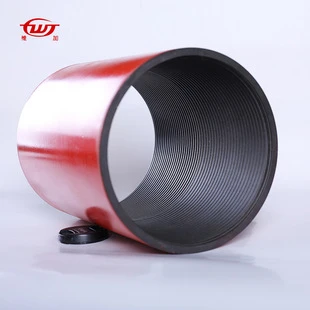- Afrikaans
- Albanian
- Amharic
- Arabic
- Armenian
- Azerbaijani
- Basque
- Belarusian
- Bengali
- Bosnian
- Bulgarian
- Catalan
- Cebuano
- Corsican
- Croatian
- Czech
- Danish
- Dutch
- English
- Esperanto
- Estonian
- Finnish
- French
- Frisian
- Galician
- Georgian
- German
- Greek
- Gujarati
- Haitian Creole
- hausa
- hawaiian
- Hebrew
- Hindi
- Miao
- Hungarian
- Icelandic
- igbo
- Indonesian
- irish
- Italian
- Japanese
- Javanese
- Kannada
- kazakh
- Khmer
- Rwandese
- Korean
- Kurdish
- Kyrgyz
- Lao
- Latin
- Latvian
- Lithuanian
- Luxembourgish
- Macedonian
- Malgashi
- Malay
- Malayalam
- Maltese
- Maori
- Marathi
- Mongolian
- Myanmar
- Nepali
- Norwegian
- Norwegian
- Occitan
- Pashto
- Persian
- Polish
- Portuguese
- Punjabi
- Romanian
- Russian
- Samoan
- Scottish Gaelic
- Serbian
- Sesotho
- Shona
- Sindhi
- Sinhala
- Slovak
- Slovenian
- Somali
- Spanish
- Sundanese
- Swahili
- Swedish
- Tagalog
- Tajik
- Tamil
- Tatar
- Telugu
- Thai
- Turkish
- Turkmen
- Ukrainian
- Urdu
- Uighur
- Uzbek
- Vietnamese
- Welsh
- Bantu
- Yiddish
- Yoruba
- Zulu
Casing Collar Innovations for Enhanced Oil and Gas Well Integrity
Understanding Casing Collars in Drilling Operations
In the field of petroleum drilling, casing collars play a critical role in ensuring the integrity and safety of well operations. Casing collars are specialized components that are used in conjunction with casing pipes—large, cylindrical tubes that line the wellbore and provide structural support, prevent the collapse of the borehole, and protect groundwater from contamination. By understanding the function and significance of casing collars, industry professionals can enhance drilling efficiency and safety.
What is a Casing Collar?
A casing collar is a thickened ring or joint that is found at regular intervals along a casing string. These collars are designed to connect two sections of casing pipe and provide a robust structure that can withstand the stresses associated with drilling operations. Typically, collars are placed approximately every 30 to 50 feet along the casing, although the exact spacing may vary based on the specific drilling conditions and requirements.
Casing collars serve multiple purposes they facilitate the attachment of casing to the drilling rig, assist in the installation of additional tools and equipment, and provide a stopping point for cement during the cementing process. This process is crucial for creating a secure bond between the casing and surrounding rock formations, thereby preventing the migration of fluids along the wellbore.
Types of Casing Collars
There are various types of casing collars, each designed for specific applications and depths
. The most common types include1. Regular Collars These are standard collars used in most drilling operations, providing a basic connection between casing sections.
2. Cementing Collars Designed to enhance the cementing process, these collars often feature additional ports or designs that allow cement to flow effectively into the annular space between the casing and the wellbore.
casing collar

3. Float Collars These collars are equipped with specialized valves that allow cement to flow downward while preventing backflow of cement or drilling fluid. They play a crucial role in ensuring that the cement sets properly and provides a strong seal.
4. Liner Hangers While not traditional collars, liner hangers serve a similar function by allowing for the deployment and support of liner sections in the wellbore, especially in wells that require multiple casing strings.
Importance of Casing Collars
The importance of casing collars cannot be overstated. They provide essential structural integrity to the casing string, ensuring that the entire system can withstand pressures and forces encountered during drilling operations. Without properly functioning casing collars, the risk of wellbore collapse or contamination of surrounding groundwater increases significantly.
Moreover, casing collars simplify the process of replacing or repairing damaged sections of casing. With well-defined intervals where collars are located, operators can easily identify and address issues without disrupting the entire casing string, thus saving time and minimizing costs.
Conclusion
In summary, casing collars are a pivotal aspect of drilling operations, serving as a robust mechanism that connects casing pipes and enhances the overall integrity of the wellbore. Their role in facilitating cementing operations and providing structural support makes them indispensable to the safe and efficient extraction of hydrocarbons.
As the oil and gas industry continues to evolve and innovate, incorporating advanced designs and materials for casing collars will be essential in addressing new challenges and improving drilling safety and efficiency. Understanding the dynamics of casing collars is crucial for industry professionals aiming to optimize their operations and adhere to best practices in the field.
-
Well Casing Extension Couplings – Applications and InstallationNewsJun.06,2025
-
Types of Crossover Subs in Drilling & CompletionNewsJun.06,2025
-
Key Features of High-Quality Tubing Pup JointsNewsJun.06,2025
-
Installation and Maintenance Tips for Steel Couplings for PipeNewsJun.06,2025
-
How to Select the Right Pup Joint for Oil & Gas OperationsNewsJun.06,2025
-
Applications of Stainless Steel Pipe CouplingsNewsJun.06,2025







